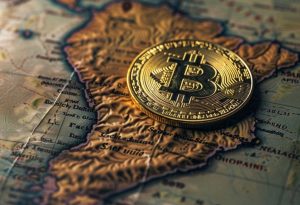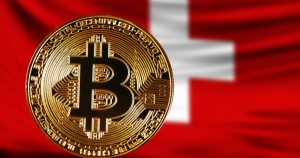Why the BRIC are unlikely to succeed with their de-dollarization
6 min readTable of Contents
The status of the US dollar as the key currency has been increasingly called into question since the Russian foreign exchange reserves were frozen. There are statements on social media and newspaper articles that suggest that the golden age of the US dollar is over. Instead, new alliances are forming among the BRIC countries and efforts are being made to use other currencies and even gold for international trade and to build up reserves. So how dangerous is the situation for the US dollar really?
Goodbye petrodollars?
In principle, international commodity transactions are settled in US dollars. So if a country or company buys oil from Saudi Arabia, then US dollars have to be purchased to do the deal. However, it is becoming increasingly common for two parties to agree on a different currency. This applies in particular to the nations that do not have a very good relationship with the USA or the West.
Brazil and China joined in March agreedto settle future trades in their own currencies. Also there is on the part of Saudi Arabia considerations, Doing oil deals in yuan instead of US dollars. It is also not surprising that Russia now also accepts yuan for its commodity transactions. Accordingly, one reads more and more often about the petro-yuan, which is increasingly replacing the US dollar in commodity transactions in certain regions.
Such transactions suggest that, in practice, the US dollar is losing importance. So far, however, there are no figures that suggest that the US dollar’s dominance in terms of transaction volume in foreign exchange trading has noticeably reduced. According to the Bank for International Settlements (BIS) US dollar dominance remains high at almost 90 percent in global foreign exchange trading.
Real politics makes monetary policy
When the United States froze Russia’s US dollar reserves at the start of Russia’s war of aggression against Ukraine, there was a great outcry. Why should a nation build up US dollar reserves in the future if they can be frozen by the US at any time? With full force, the less pro-Western oriented countries in particular were made aware of their dependence on Uncle Sam.
But here, too, very little has happened in the short term, which does not mean that there cannot be major shifts in the long term. As logical as certain evasive movements may be in the near future, one must not forget that in the end only the dependencies are exchanged. Of course, Russia will build up yuan reserves instead of US dollars in the future, but ultimately Russia is making itself more and more dependent on China. The freezing of Russia’s foreign exchange reserves has therefore harmed not only the US dollar but all fiat currencies around the world.
The US dollar remains the preferred reserve currency of governments and accounts for about 60 percent of central bank reserves at the end of 2022, compared to 20 percent of the euro and 6 percent of the yen. So far, the BRIC countries have hardly played a role in the foreign currency reserve package.
BRIC go for gold
With the almost trivial realization of what fiat dependency means not only for citizens but also for states, gold advocates are regaining attention. Central banks have been expanding their gold holdings for years, and the BRIC countries in particular are particularly fond of gold. Accordingly, voices are growing that gold-backed currencies could soon make a comeback. But this time the rules of the game would not be set by the USA, as it was in Bretton Woods in 1944, but by the BRIC countries and primarily China.
So far these are just concepts. It is still completely unclear whether a commodity-covered currency will really come about and how this cover can be ensured and transparently checked. As tempting as it may sound to some gold fans, even a gold-backed currency is only worth as much as trust in the issuing institutions. There has also never been 100 percent gold coverage. One need only remember here the French President Charles de Gaulle, who in 1969 had lost confidence in the gold backing of the US dollar. The result: France wanted to exchange its US dollars for gold and thus initiated the end of the gold standard.
And even if you only look at how much gold the respective central banks own, the USA would be superior to their challengers. If you official numbers trust – there is allegationsthat China has more gold reserves than officially stated – the US (8,133 tons) has about twice as much gold as China (1,948 tons) and Russia (2,229 tons) combined.
Bretton Woods III
The narrative of the new commodity-backed currency system is getting an upswing from the much-cited Credit Suisse strategist Zoltan Pozsar. Under the meaningful term Bretton Woods III he sketches the picture of an ever weakening US dollar, which is being pushed out by the commodity-backed currencies of the players mentioned. So far, his scenario, despite all the ambitions, is just pure speculation. If you don’t want to remain in an isolated planned economy, you also have to convince the market of the new currency system. This is exactly where you end up back at the starting point of every currency, regardless of whether it is backed by commodities or not: trust.
Why should one trust the given raw material coverage? Why should India make itself dependent on China when they are in competition with each other? Why should private actors like banks and companies rely on a currency managed by corrupt and non-transparent governments like Russia? Especially since the question arises as to whether free exchange rates and internationally unrestricted access to the new currency constructs can be obtained at all. Closed-off China in particular would have to do a U-turn for this to happen.
US dollar stablecoins vs Chinese CBDC infrastructure
The reserve currency status of the US dollar has been confirmed by the crypto market in recent years. In the free token economy, there are no US dollar-related institutions like the World Bank or IMF and yet people around the world have chosen the US dollar as their tokenized fiat currency. The US dollar share of all available stablecoins is somewhere between 97 – 99 percent.
On the other hand, there are government efforts by China with their CBDC infrastructure. This should also be open to other nations and represent an alternative to the Western-controlled SWIFT payment system. To what extent the e-yuan and its infrastructure will become an export hit is also still completely unclear. Not every country will be willing and will allow its citizens to hand over all financial data to the Chinese government. The dependencies accruing from an e-yuan could even surpass that of the US dollar due to the programmable infrastructure.
US dollar attack: a shot backwards?
Attempting to counterbalance the US dollar, for example by setting up a BRIC currency basket, could even backfire and bolster the status of the greenback. After all, it is a mammoth task that comes from very different actors with regard to their common interests. Just think of Brazil’s political instability, Russia’s desire for war or the tense relationship between India and China. Not every country will be willing to take economic risks just to replace the US dollar as the reserve currency. Especially since many other developing countries that would have to join this currency construct are likely to be put under pressure by the USA.
De-dollarization: more marathon than sprint
A new key currency is not created within a few years, but in decades. Surely the US dollar may be battered than it has been since the end of 1971’s Bretton Woods. It can also be assumed that its dominance will continue to decrease in the coming years and that we will experience stronger currency pluralism. The de-dollarization has thus been set in motion, even if that does not mean that the US dollar will devalue in the foreseeable future or that it will lose its status as a reserve currency.
Instead of a reliance shift to other fiat currencies, the entire fiat currency system loses to the geopolitical events. Should mean that the lost confidence in the US dollar cannot be compensated for by another player like China with its yuan or e-yuan. Instead, state-neutral currency substitutes such as gold and bitcoin are likely to gain in importance. It is less about their payment than their autonomous reserve and security function. In the end, there is always the question of where the big money is headed. Even a Brazilian investment bank will not be able to avoid US dollar bonds, just as Saudi Arabia, which does import and export business with the US, cannot do without US dollar accounts.






